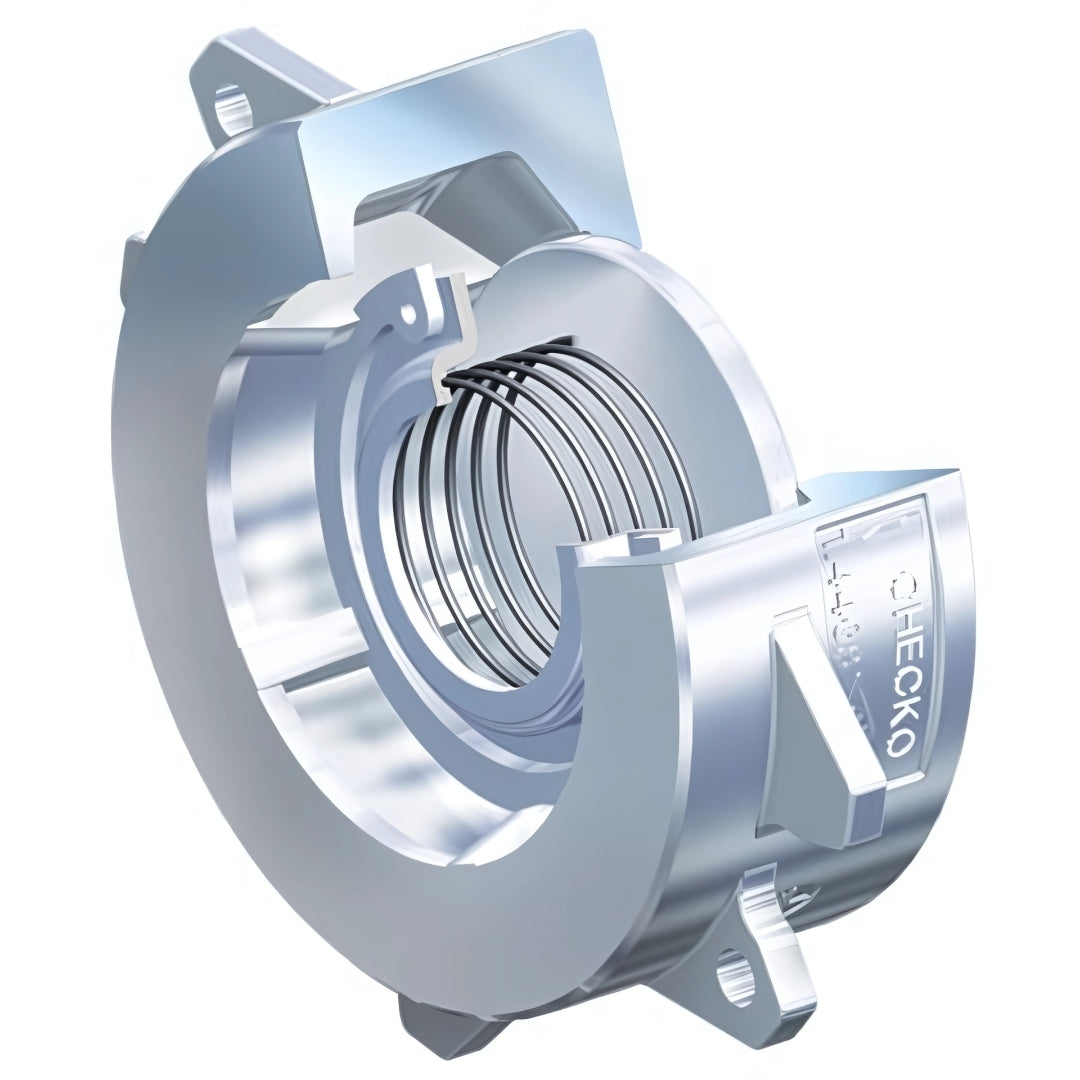Steam Valves
ARI CHECKO-D Check Valve (Wafer Pattern, Stainless Steel Body)
ARI CHECKO-D Check Valve (Wafer Pattern, Stainless Steel Body)
Couldn't load pickup availability
The ARI CHECKO-D Check Valve with a wafer pattern design and a stainless steel body is a space-saving, corrosion-resistant solution for preventing reverse flow in pipelines carrying steam, gas, or liquid media. Its dual-plate swing mechanism allows forward flow with minimal pressure drop, and closes quickly upon flow reversal — protecting downstream equipment such as pumps, compressors, and heat exchangers.
The wafer-style body is designed for easy installation between flanges, significantly reducing space requirements and weight compared to flanged alternatives. Made entirely from stainless steel, the valve offers outstanding resistance to corrosion, erosion, and thermal stress, making it ideal for aggressive process media or hygienic applications. This check valve is suitable for horizontal or vertical mounting and can be used across a wide range of industries, including food processing, chemical manufacturing, marine, and clean steam systems.
Manufactured by ARI Armaturen, the CHECKO-D delivers dependable non-return protection, excellent sealing performance, and long-lasting durability in a compact, efficient form.
Key Features
Stainless Steel Body
Highly resistant to corrosion and wear, ideal for aggressive or hygienic process applications.
Wafer Pattern Design
Compact and lightweight, fits snugly between standard pipeline flanges without taking up extra space.
Dual-Plate Swing Mechanism
Minimises pressure drop and ensures rapid closure against reverse flow.
Universal Installation
Can be mounted in horizontal or vertical pipelines with upward flow.
Low Maintenance Construction
No external components or actuation required — fully self-operating.
Versatile Application Use
Suited for clean steam, chemical processing, water treatment, and marine systems.
Share

FAQ's
What is the difference between a valve and an actuator?
What types of actuators are available?
The main types of actuators are:
Pneumatic actuators – use compressed air for fast, reliable operation.
Electric actuators – use electrical power for precise control.
Hydraulic actuators – use fluid pressure for high-torque applications.
Each type offers unique advantages depending on the environment, media, and system control needs.
How do I choose the right actuator for my valve?
To select the correct actuator, consider:
Valve type and torque requirement
Power source available (air, electric, or hydraulic)
Operating environment (temperature, humidity, hazardous area)
Control signal type (on/off or modulating)
Matching actuator torque and compatibility with the valve’s ISO mounting ensures reliable performance.
What are the main types of valves used in automation?
The most common valves in automated systems include:
Ball valves – for tight shutoff and quick operation.
Butterfly valves – for larger flow control with compact design.
Globe valves – for precise throttling and flow regulation.
Check valves – to prevent backflow.
Gate valves – for full bore flow isolation.
What’s the difference between a double-acting and spring-return actuator?
Double-acting actuators use air (or power) to both open and close the valve.
Spring-return actuators use air to open (or close) the valve, and a built-in spring to automatically return it to a safe position when power or air is lost — ideal for fail-safe operation.
How often should valves and actuators be serviced?
Regular maintenance intervals depend on operating conditions, but a good rule of thumb is to inspect every 6–12 months.
This includes checking for leaks, lubrication, seal wear, and actuator responsiveness to prevent unexpected downtime.

